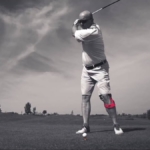The effect of knee orthoses on gait in medial knee compartment osteoarthritis
Knee osteoarthritis (OA) is one of the most common joint disorders. Epidemiological studies have demonstrated that approximately 6% of the population aged 30 years or older and 12% of the population aged 65 years or older have knee OA. Medial compartment OA is more prevalent than lateral compartment disease due to the mechanism of load distribution in normal walking.

The ACTIVATOR poles. Walk your way to better health. urbanpoling.com William Jans Photo.
Maryam Maleki, Mokhtar Arazpour, Mahmoud Joghtaei, Stephen W Hutchins, Atefeh Aboutorabi, Ali Pouyan, Prosthetics and Orthotics International August 26, 2014
It has been estimated that 60%–80% of load is distributed to the medial compartment of the knee joint during normal walking. This is due to the external varus moment (otherwise known as the adductor moment) falling medial to the knee joint. OA of the medial compartment of the knee causes considerable pain, immobility, disability, a reduced quality of life, and negative changes in kinetic and kinematic parameters.
In response to pain, patients adapt their gait and these adaptations may result in further progression of OA. This means that the joint degeneration experienced by people with medial compartment knee OA is also associated with alteration to normal gait patterns and the existence of compensating motions in the lower back and lower extremity joints.
Treatments for knee OA are designed to alleviate pain by attempting to correct mechanical malalignment. Treatment approaches for knee OA may be divided into operative and non-operative methods. Operative treatment includes arthroscopy, joint replacement, and osteotomies. Non-operative methods are often prescribed (indicated) in mild to moderate stages or when surgery is not feasible and consist of drug therapy, physiotherapy, and orthopedic devices (assistive devices, walking aids, foot orthoses, and knee braces).
According to the categorization of American Academy of Orthopedic surgeons, knee braces are divided into four classifications including prophylactic, functional, rehabilitative, and valgus off-loader knee braces. The valgus off-loader knee braces are common nonsurgical strategy for treatment of people with medial knee OA. It has been reported that the use of valgus brace involves a combination of several mechanisms.
Theoretically, valgus unloader braces provide pain relief by reducing the load on the medial compartment through the application of an opposing external valgus moment about the knee that partially compensates for the external varus moment. This is achieved by applying an external corrective force to the knee through the adjustable straps or condylar pads while opposing counterforces arising from the upper and lower brace supports act proximal and distal to the knee joint. This is called a three-point pressure mechanism of valgus unloading by the brace.
The resulting improvement in knee alignment can cause reduction in the moment arm of the knee adduction moment (KAM) and the value of the KAM itself. At the same time, compressive load is shifted away from the medial compartment, thereby improving the distribution of compressive load over the joint surfaces. This mechanism also leads to a reduction in the need for the muscles and ligaments to be activated to counteract the pathological forces. Unloader braces have also been shown to delay the requirement for knee surgery.
Several studies investigated the efficacy of different types of knee braces on gait parameter in medial knee OA. Gaasbeek et al. addressed walking parameters (e.g. step length, rang of motion, walking speed, and adduction moment) and reported that utilizing the knee braces results in reduction in the range of motion (ROM) in the arthritic limb and because of that the step length and stride length decrease on the arthritic limb. However, Arazpour et al. in their evaluation concluded that the ROM and step length increased with the knee braced.
In addition, there are two reviews that assessed the effectiveness of knee braces for medial knee OA. Ramsey et al. and Feehan et al. performed reviews about the efficacy of off-loader knee braces on the reduction of pain in medial compartment knee OA. They concluded that reduction of pain by wearing off-loading knee brace was instantaneous, and that these braces are cost-effective devices for treatment of patient with knee OA.
Both studies only evaluated the changes in pain severity. According to these controversies, and since there is no previous literature published that has evaluated the effectiveness of knee braces on gait parameters in patient with medial knee OA, a literature review was conducted which targeted the efficacy of the knee orthosis on the gait parameter in medial knee OA.
| Conclusion |
In summary, this study suggests that valgus unloader braces can re-distribute loads in the degenerative compartment of knees and can subsequently reduce the adduction moment acting on the knee. Finally, treatment with knee braces is effective in decreasing pain and increasing speed of walking and step length in conjunction with a reduction in the adduction moment applied to the medial compartment of knee joint.
| References |
The effect of knee orthoses on gait parameters in medial knee compartment osteoarthritis: A literature review, Maleki M, Arazpour M, Joghtaei M, Hutchins SW, Aboutorabi A, Pouyan A. Prosthet Orthot Int. 2014 Aug 26. pii: 0309364614547411. [Epub ahead of print]






